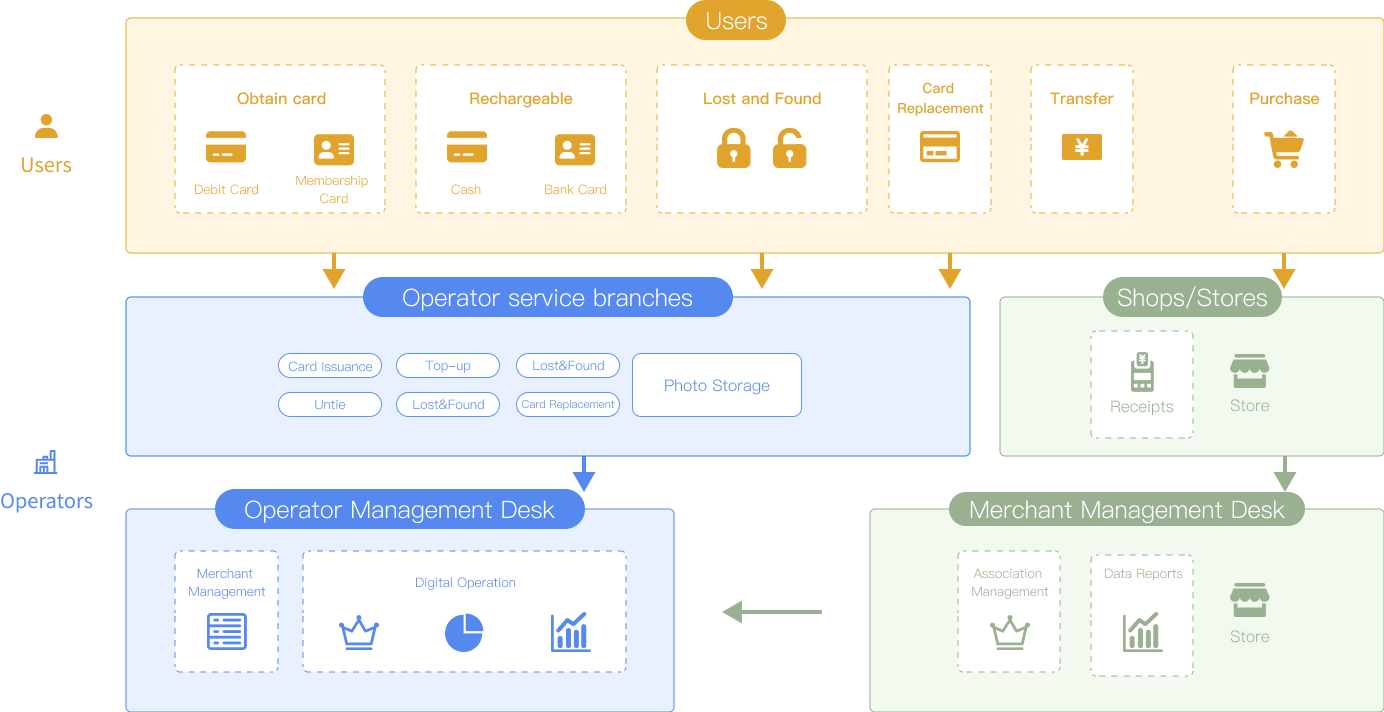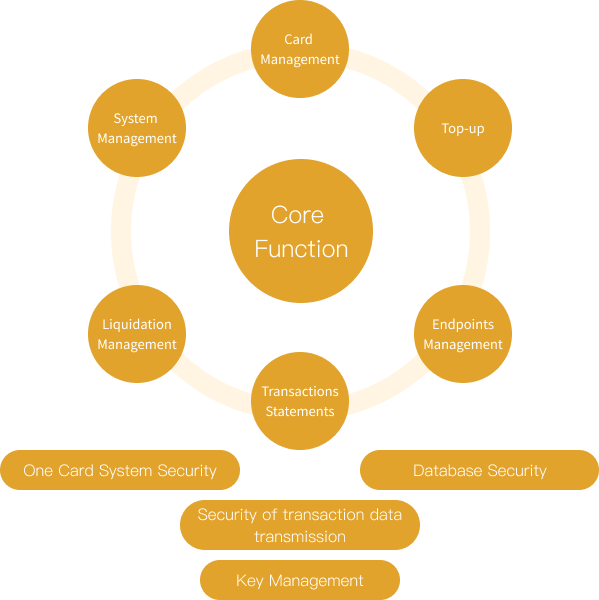- Smart Payment Security
- Intelligent Terminal
- Fintech Services
- Solutions

One-Card-System Solution for Industrial Park is an integrated solution that supports customer information management and card issuance business management, providing users with top-up, consumption, lap storage and other services, supporting a variety of payment modes, including card payment, QR code cell phones payment, smart hardware payment. Users can choose payment authentication methods with different security levels according to their personal habits, and support a variety of business scenarioses. The One Card System solution aims to provide users with convenient services, real-time management of all cardholder data and account changes, real-time monitoring of orders, business data, financial data and status; real-time statistics of transaction data; and business analysis of collected data.

A paradigm exists for large enterprise park management. The “three large and one small” scenario refers to an increase in employees, drives more more merchants, which results in more payment forms and ultimately less management methods. The daily transaction volume can be large, but it is impossible to carry out unified management of merchants and employees, especially with complicated clearing and settlement processes. The workload is high and financial loopholes become more prevalsent.
The existing campus card and management system only offers a single function and few applicable scenarioses, making it unsuitable for integrating with a campus system. The cost of annual maintenance is high. Expectations are high for the system to integrate multiple functions such as merchant consumption, access control, attendance, canteen vending, etc.
Existing payment methods are individually separate in the industrial park. Unifying disparate systems exposes potential risks making it difficult to move forward.


•Realizing the unified management of multiple access control cards.
•Integrated management of membership information, simplifying the management process.
•Providing data analysis for membership operations.
•Improving the membership development system and simplifying the steps and processes of membership development.
•Providing multiple marketing tools, including points and coupons.
•provide marketing business reports to analyze member behavior and guide member development.
•Provide financial statement, consumption statistics report, top-up statistics report, counter business statistics report, terminal management report, abnormal data report etc.
•Support data integration with external systems
•– Support users to swipe membership cards at physical stores for payment, without the need to carry cash.
The consumption management system mainly refers to consumption activities at canteens, supermarkets, stores and other retail locationss. The consumption management system mainly includes merchant management, terminal management, subsidy issuance management and other functional modules. The cardholder can swipe the card at the consumption terminal in the park and complete the consumption deduction function.

Eliminates the inconvenience of cash and changes
The entire transaction is recorded, eliminating financial loopholes
Reduced workload and queues
Customized reports, uniform clearing and liquidation
Modular design, process-oriented dynamics, providing a good basic environment for the expansion of logistics access control and attendance applications

• Benefits from fund precipitation
• Benefits from operation system
efficiency
• Unified management of merchants and employees, business efficiency improvement

• Cashless payments to avoid fraudulent transactions andand counterfeit bills
• Increased member loyalty and revenue from repeat purchases
• Sales report analysis to keep track of sales

• Easy and fast payment
• only need one card to travel around the campus

Leveraging the multi-application characteristics of IC cards, a centralized management platform based on a B/S architecture was built around the microprocessor card. This system supports merchant payment, access control, attendance, canteen vending and other functions designed to meet the demands of the Gree campus implementation. This unified system manages customer data, account data, transaction data and other public functional models.
The use of the card is extended to identity applications such as staff check-in management, channel management, shuttle bus, conference check-in and other functions.
It also enables the network-wide sharing of industry application information, and basic cardholder data in real time. A single card unifies account, payment and identification uses. At the same time there is continual monitoring of the status of each subsystem, to achieve the unified management of financial information.
In terms of enterprise information management, the card platform can be integrated with human resources and enterprise ERP systems to achieve unified identity authentication, integrated information services, centralized information management, and integrated management of financial information.